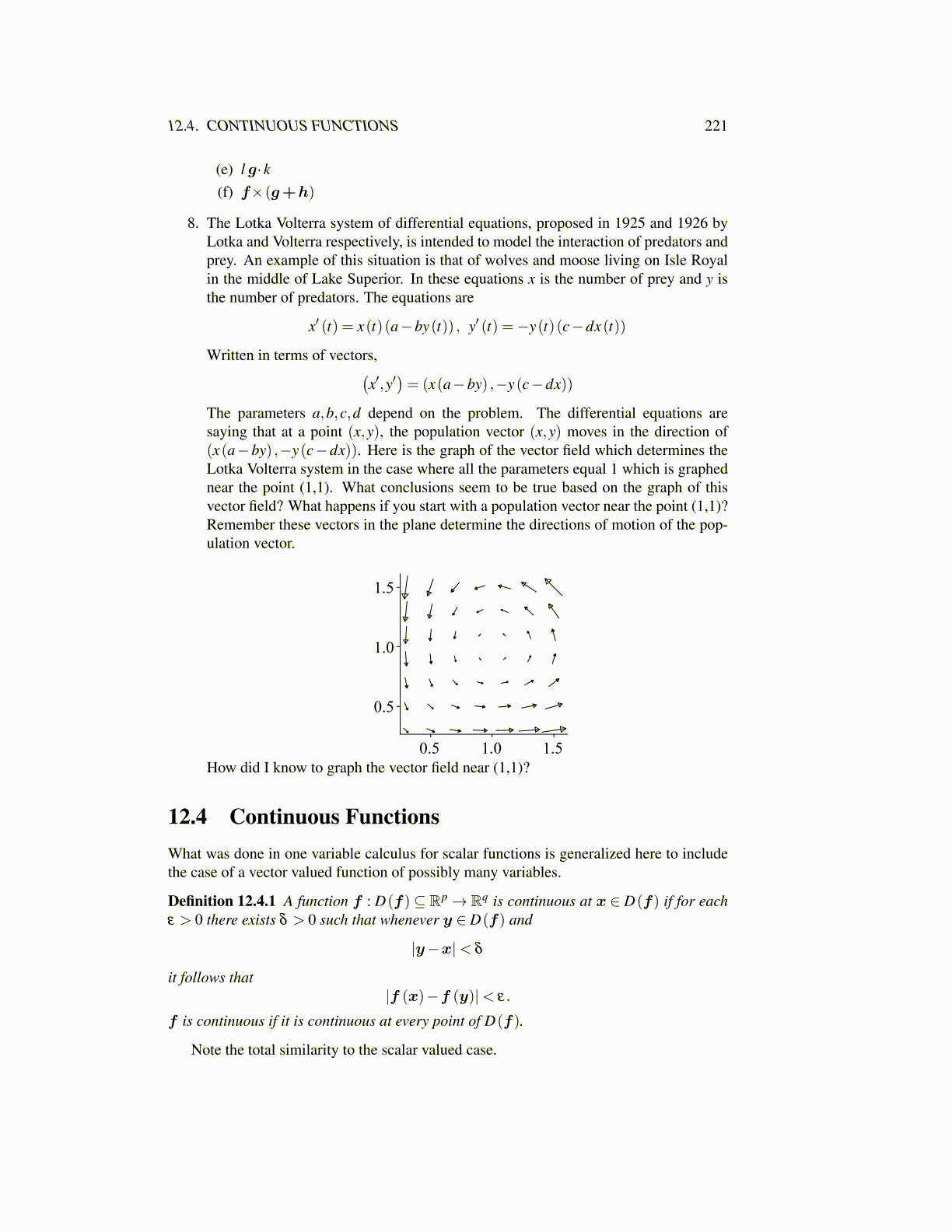
12.4. CONTINUOUS FUNCTIONS 221
(e) l g· k(f) f×(g+h)
8. The Lotka Volterra system of differential equations, proposed in 1925 and 1926 byLotka and Volterra respectively, is intended to model the interaction of predators andprey. An example of this situation is that of wolves and moose living on Isle Royalin the middle of Lake Superior. In these equations x is the number of prey and y isthe number of predators. The equations are
x′ (t) = x(t)(a−by(t)) , y′ (t) =−y(t)(c−dx(t))
Written in terms of vectors,(x′,y′
)= (x(a−by) ,−y(c−dx))
The parameters a,b,c,d depend on the problem. The differential equations aresaying that at a point (x,y), the population vector (x,y) moves in the direction of(x(a−by) ,−y(c−dx)). Here is the graph of the vector field which determines theLotka Volterra system in the case where all the parameters equal 1 which is graphednear the point (1,1). What conclusions seem to be true based on the graph of thisvector field? What happens if you start with a population vector near the point (1,1)?Remember these vectors in the plane determine the directions of motion of the pop-ulation vector.
0.5 1.0 1.5
0.5
1.0
1.5
How did I know to graph the vector field near (1,1)?
12.4 Continuous FunctionsWhat was done in one variable calculus for scalar functions is generalized here to includethe case of a vector valued function of possibly many variables.
Definition 12.4.1 A function f : D(f) ⊆ Rp→ Rq is continuous at x ∈ D(f) if for eachε > 0 there exists δ > 0 such that whenever y ∈ D(f) and
|y−x|< δ
it follows that|f (x)−f (y)|< ε.
f is continuous if it is continuous at every point of D(f).
Note the total similarity to the scalar valued case.